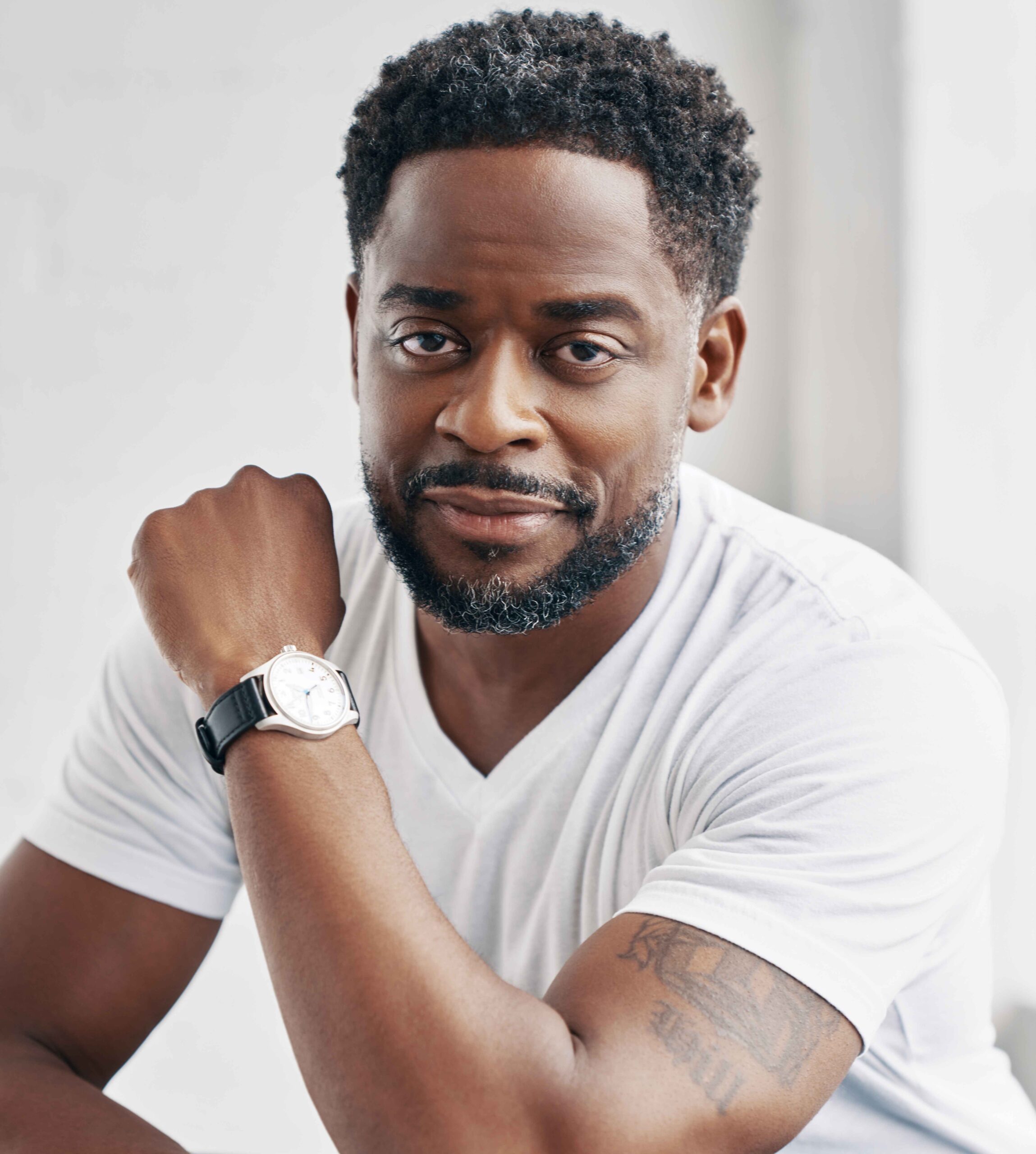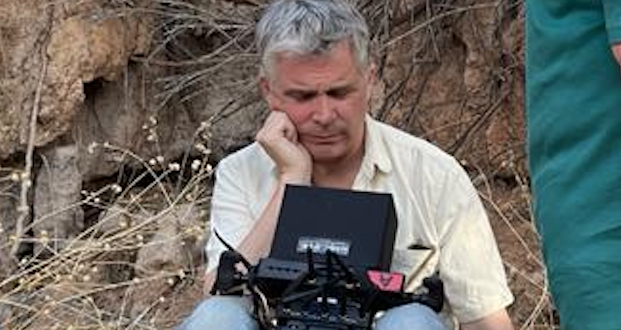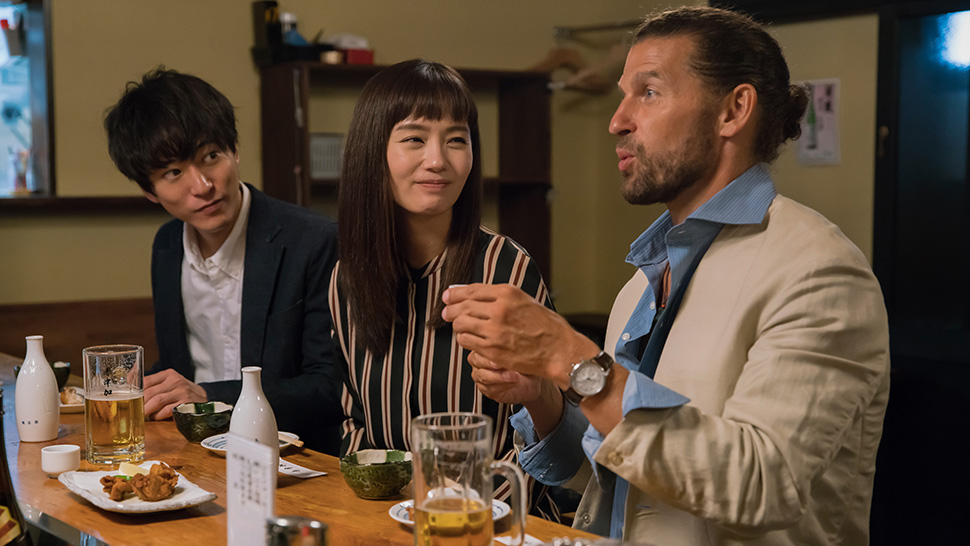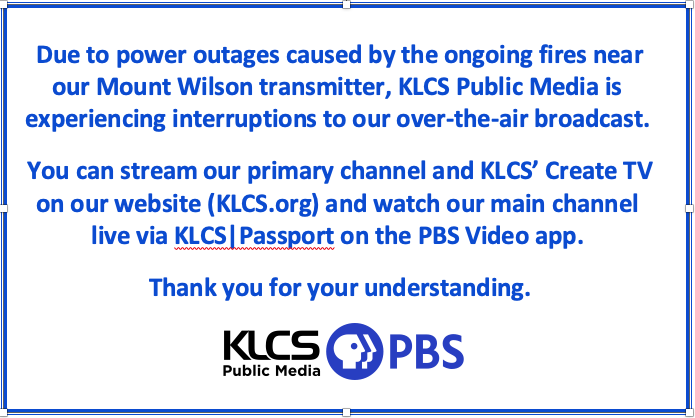Get ready to hit the road with Dulé Hill in the exciting new series, The Express Way with Dulé Hill. Join Dulé as he embarks on a journey through California, Appalachia, Chicago, and Texas, meeting remarkable artists who have turned their struggles into joy through their art. We had the pleasure of speaking with Danny Lee, the creative Los Angeles director behind this primetime PBS series. In our interview, Danny shares the story of how “The Express Way” came to life, reveals his favorite moments from filming, and discusses what he hopes viewers will take away from this inspiring show. Don’t miss out on this engaging conversation!
Danny, I love how this is a primetime PBS show that breaks the old mold of what PBS shows looked like, many years ago. Your title that is most prominent is “Director” and not Executive Producer (EP), I noticed. Yet, it seems like you helped shape and create this show.
Yeah, correct. Often I direct and EP a lot of the projects we do, when it’s television. I don’t see a disconnect between the two roles. Yes, director first, also an EP. I created the show with Dulé Hill. Dulé, he and I were set up by an agent and we met maybe 2018. He came to my office and he just an idea about wanting to do a series exploring dancers. And my EP hat was on and I thought, “What if we opened the aperture a little bit more and focused on artists of all crafts and disciplines, but also made sure that it wasn’t just aesthetically pleasing, but we were focusing on artists who were using their craft in these very high stakes transformative ways.
That became a requirement of any artist featured in the series. So that’s a roundabout way of in saying anytime I get into a project, I can’t help myself but to help shape it into its best possible form. And I find that directorial duties and producorial duties are often interweaved and attached to each other. So, therefore, I am both roles. And typically, having a production company CALICO, a lot of projects will come through here, sometimes I’ll direct them, sometimes I won’t and maybe there’s a more suitable director. CALICO specializes in all these cultures, it’s the wheel of culture, and all the spoke are different subcultures. And being a person of color, having grown up around skateboarding, music, comic books, video games, sports, all these different things, I’ve always been a participator, and therefore any documentaries I’ve done, having a deep intimate knowledge about all these cultures, makes making these documentaries a lot more organic.
So you mostly like the director title?
I don’t even know if really it’s about a title, I mostly call myself mostly a film maker. I have an idea, there’s a story in my head in scripted and and in documentary. Like I’m working on a few scripted films that I wrote, so it comes from the idea, the universe, the characters. And then I just go and make it and shape it, and sculpt it, so for me titles are less important. But yes, I am a director first and you call me a producer second. It’s really director, writer, producer. But like for the “Expressway,” I show-ran because show running is in a lot of ways shaping the project from the top. Sometimes showrunners deploy a director into the field, then you’re losing a degree of quality of control. For me, it’s like, “Here’s the idea, let me sculpt it, shape it into development. Let me go into the field, execute it, and deliver to PBS what they wanted and what I wanted. I’ve worked with many different networks and everyone’s different. It’s special to do things that are really meaningful and your North Star is stories with integrity, and sometimes people associate integrity with soft and I wanted to make something that felt very powerful and dramatic. And also inherently positive, and I have a lot of gratitude for PBS for allowing me to execute my vision.
You’ve done mostly sports documentaries and series; this show caters to a broader audience and the arts community. How did this show end up on PBS? You referenced it earlier, when did you meet Dulé?
Sports is one spoke of it. I have a film out in theaters on May 3 called “Who is Stan Smith?”, that is executive produced by LeBron James and Carter, but if you look at my body of work, it’s usually all things culture, whether it’s skateboarding, fashion. music. My next feature doc is about an iconic music artist, so it covers all things. So my interests lie in all things culture, because those are all the things I grew up with. The Expressway has many different art forms within it for Season One – dance music, visual arts, poetry. So it’s a natural extension of my interests and I think it’s beyond certain buckets of culture. Dulé and I just hit it off as people. He’s driven by doing meaningful and impactful work that never compromises his principals and I feel similarly. Even the way we speak to people, we’re always looking for the positive versus the negative. I remember seeing him on “West Wing” and he was such a pioneer on network television. A black actor on network TV, when there weren’t many examples preceding that. You had the Cosby Show, A Different World, Good Times. He inhabited a character that wasn’t African American first, he was simply a presidential aide. When we met, we just became instant friends; we shopped it around, and it got passed by everyone. Everyone was looking for something specific, now the business is so risk averse, it’s true crime or celebrity. It’s becomes so narrow, all these studios and streamers, it’s become even more narrow. It’s almost a miracle that our show got through and that’s why we’re so thankful. It’s something that is so meaningful. I had done a project with PBS around 2016 and I picked up the phone and called Mishi Ebrahim, and she saw it. We even worked with WGBH at the time, and their studio arm, Studio 6, the studio folded due to the pandemic. And one day Mishi calls me and it just happened very quickly from there. It was always a ‘Yes’, but as you know with PBS there’s a fundraising component and usually a member station will lead the charge in fundraising. But this show was purely with PBS national and Mishi believed in it and shared it with a certain funder, who saw it and said, “Yes, all in, love it, love the sizzle, love the filmmaking processes involved.” So that’s how it happened. It was a four-to-five year process, one of those stories of just pounding the pavement and believing in the show and no one would say ‘yes’; and being grateful.
I love that you’re an Asian-American Director/Executive Producer and Dulé’s an African-American host. I notice that episodes try to find unique people who may not be represented on other shows, like a gay mariachi band, or gay bluegrass musician, the grandmother dancers in Chinatown and the Venezuelan immigrant. Was that a deliberate decision?
It was very deliberate to identify multicultural stories, people from marginalized communities, underserved voices, stories you just wont normally come across. Like the Asian-American senior citizens who were burlesque dancers. For us, if the log-line makes you go, “Wow, that’s different.”, that was really important for us, as people of color, to pay it forward because Dulé and I can relate to maybe not being as heard. And I think art is a way for people of color to be seen, historically. And I, personally as a filmmaker, can relate to that.
Did you have a big part in selecting the people who would be featured?
I was literally the guy interviewing them on Zoom doing casting just because we had a great team of researchers who came up with a bunch of different options. I think my instinct as a filmmaker, having done this for 20-plus years, you just instantly know and even looking at a photo sometimes, you kind of get a sense. I also wanted to find artists who were impactful, had an impactful story, and also, who were charismatic. So, yes, I personally casted all of them. I personally interviewed each of them for an hour and a half, recorded the videos, shared them with PBS, helped generate all the episode summaries, and we had very little notes. Maybe none. It was a first pass that all of our artists who were approved.
I was touched by the Appalachia episode, given many of us have heard about the addiction crisis. The lute maker seems important in that community. When making this episode, what were your thoughts on showcasing him on a national show? Did you hope viewers would be inspired to support him and perhaps buy his instruments?
For sure, I think, one – that story about Doug Naselroad, the master luthier in Highland, Kentucky, who runs Troublesome Creek Stringed Instruments and works with the culture of recovery, when I stumbled across that story, it was one of those high stakes stories that you could ignore, set in a region which you rarely get a peek-into. I think just like people of color, who have many misconceptions about them, rural white folks experience the same and I thought it was important to dispel any misconceptions about rural white people as racist and xenophobic. We were a crew of all people of color, driving through winding mountains in rural Kentucky. In fact our hotel was in Hazard, Kentucky, where the KKK has a strong base. There were definitely Confederate flags, I remember Dulé saying something; you could tell that he was on edge. It was important to spotlight this because he’s doing important work. You’re talking about helping people in recovery, a region decimated by the economics, decimated by addiction. And here comes this guy who experienced addiction on his own, working in tandem with the drug court to divert incarceration and not only find a way to rehabilitate, but give them a new passion. To fill their heart and their mind with something so creative, and so intense. This work isn’t done in a week. You are building these instruments and then at the end of it, it makes a beautiful sound. It’s so unique and so beautiful. There were layers to this story – he was buying some real estate there, which you see a glimpse-of. This show is so challenging because we have 52 minutes to tell these three robust stories, so there’s more on the floor. But yes, I would hope people not only support Troublesome Creek Stringed instruments and this company and these guys, but also look to their own communities and how they can ignite creativity and develop similar programs. There’s something about art that is so meditative, that has a way of removing stress and tackling anxiety. It has a cymatics effect, it works on trauma. And that’s one of the big themes in the episode, is how art can help work on trauma, in a way that medicine or pharmaceuticals cannot.
What did you learn from making this series? And, did making this show change you in any way?
Absolutely, every one of these stories put things in perspective. If you allow it, if you receive in that way. I wasn’t there to just make these documentary series, I was there to really experience it. And I learned so much, I cried so much, I fell in love with every single one of these people. It’s safe to say that it was life changing for all of us. And I don’t say that lightly. I’ve done a lot of celebrity stuff, and I’ve experienced all sorts of projects, and this is one of those where we were telling the exact stories that really hit the heart, without any precondition, without any specific mandate from a network to lean more this way or get more celebrity in there. It just was the, probably, purest project I’ve ever worked on.
I loved hearing the story of the gay bluegrass singer, and the Venezuelan immigrant; I never would have known about her had I not seen the episode. What was a favorite episode or person you met in this show?
It’s hard. The two episodes that stand out to me because they’re the most different, are the Appalachia episode and the California episode. And the other two are equally powerful, can’t wait for people to see the Chicago and Texas episodes. Some of the ones that instilled so much joy in me were Larry and Joe in Appalachia, like I just hear the music, maybe it’s because I’m married to a Columbian woman, the Latin-grass speaks to me. But, it really gave me a sense of joy, also Shaheem the deaf dancer, such a beautiful soul, the Grant Avenue Follies, they were just so welcoming and so sweet and incredible. Some of the more deeply-impactful stories include: there’s an Andre Theatre Collective in Chicago, who are working to produce plays of incarcerated playwrights, on the outside. It’s an extension of a lot of members from this hip hop arts group called Savemoney, which include Chance the Rapper, Vick Mensa and Joey Purp. I actually found this story because I know these guys. And I just picked up the phone one day when we were casting, because in Chicago artists and activism are intrinsically tied, and that’s the prevailing theme in the Chicago episode – how art and activism fuel each other. I said, “Joey, what are you up to?” And he told me what he was up to; and this isn’t something you can find on google, they’re just starting out, they’re just fundraising. And by the way, when this releases, if any artists out there feel like they meet the criteria, we’d love to hear from you. That’s one of the stories that had a lot of gravitas and high-stakes that really hit me. Another one would be Bassel & the Supernaturals, he’s a Syrian-American soul singer, using music to bring awareness and to raise funding for refugees of the Syrian war, that’s sort of become this forgotten war in the Middle East, which is still going on. That became the battleground for a proxy war between many different factions, primarily Saudi Arabia and Iran, and of course the U.S. involvement.

Will there be a Season Two, and if so, what other stories do you want to cover?
That’s a great question. We’ve had discussions about a Season Two with the folks at PBS, I don’t want to say that it’s promised. There’s obviously things to figure out. But, there’s a lot of excitement around the series itself. There were episodes we were considering in Season One, for instance indigenous artists in Alaska; we’re looking around New York and maybe centering around immigrant artists. Hawaii – artists who are environmental activists. Puerto Rico – centering around the Afro-Caribbean experience. So there’s an endless well of stories that we’re excited to tell. There’s so many American artists and international artists who deserve the spotlight, the arts have this incredible capacity to shape and transform society and culture. The fact that PBS continues to foster arts and culture is even more important in today’s age.
You don’t worry about running out of stories for this show.
Not at all, there’s literally no shortage of stories. It was hard to whittle down Season One.
Anything you’d like to add?
I think we went into this with the intention of hopefully creating medicine for the soul. You turn on the TV, you turn on your phone and there’s so much noise and clutter and toxicity. We wanted to create, not necessarily comfort viewing, but feel-good viewing. There is drama in this, we talk about trauma. So it’s not soft. But we want you to come out of it feeling hopeful, and also [hopeful] in your own situation. I love, personally, as a filmmaker magical realism – looking at the real world and finding magic everywhere. So that was the creative intention and the execution of it. I created what I called “special performances” for every artist. You’ll notice there’s these moments where every artist gets to express themselves and their craft in this elevated form, beyond just putting cameras on them. We lit these, we planned them. The easy way to describe them – they were these music video-like performances. To give them their time to shine. We wanted to really craft something that was honest, impactful, that celebrates artists of all shapes, sizes and points in their continuum. So that was really important because we’re living in an age where the social media metrics, your popularity, preempts the artistry. And that’s dangerous place to be in, where the art is less and less, and it’s about how many people you can bring to a concert, or how many people you reach when you post something. So making this, I think you will feel the abundance of joy and emotion in it. I really appreciate the crew both in the field and in post; every moment of working this over a period of nine months we all kept looking at each other like, “Oh my gosh, this is so special.” We were all just so incredibly moved every single day. The shooting schedule is the most intense schedule I’ve ever shot and to be so exhausted and to wake up every day and have a dramatically different story we’re telling at the end of every 12-hour day, we’re just looking at each other like, “Wow, it’s incredible.” We all kept saying “We may never experience anything like this again.” The summer of shooting this was enchanting, magical, transformative for the crew as well. We hope this series is a roadmap to finding your own voice for any artist out there.
KLCS members can stream all episodes of The Express Way with Dulé Hill, on-demand on KLCS|Passport. For more information visit klcs.org to learn how to become a member.
Learn more about Danny Lee and his work by visiting his website: dannyleeworks.com. He’s also on social media: on Instagram and Facebook.





